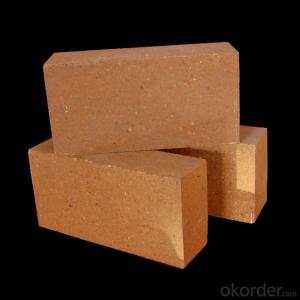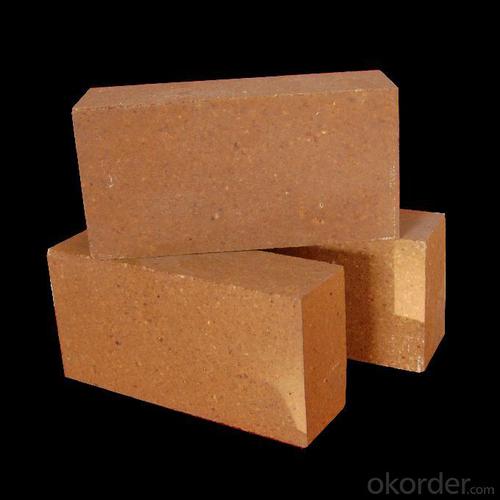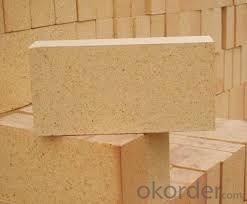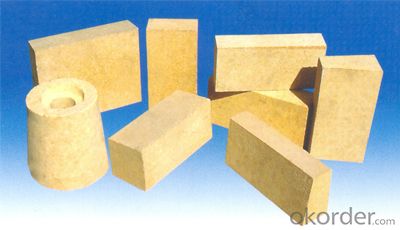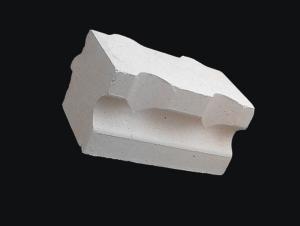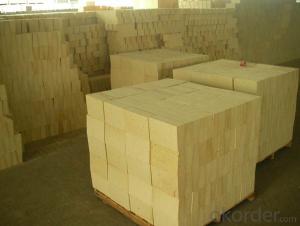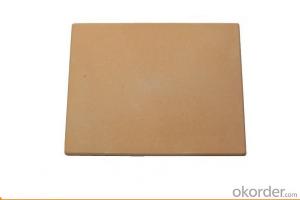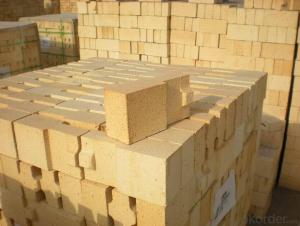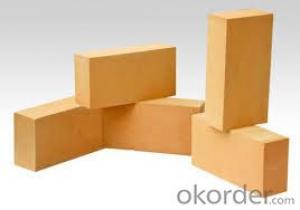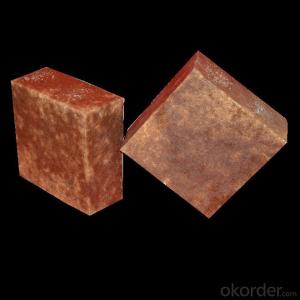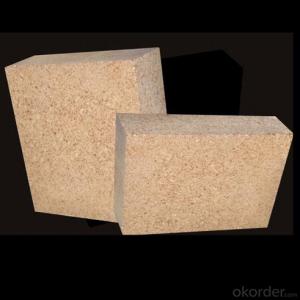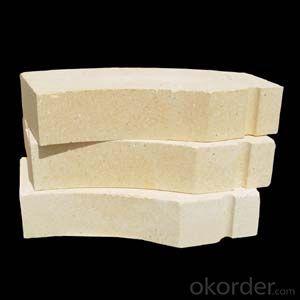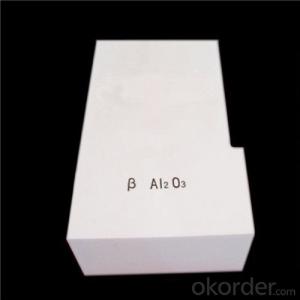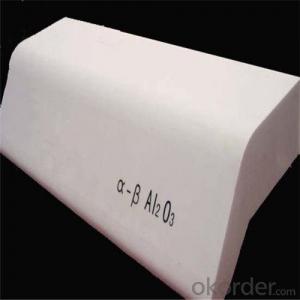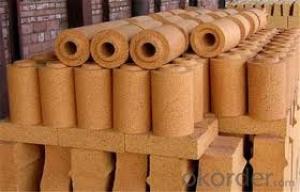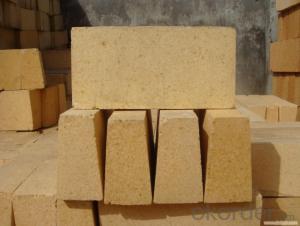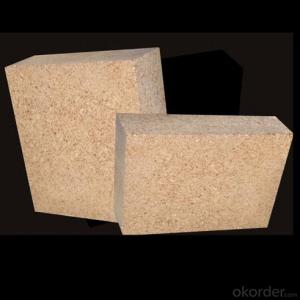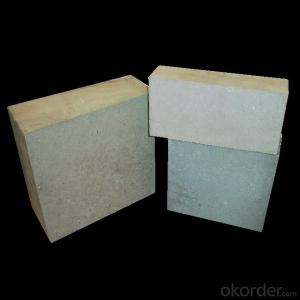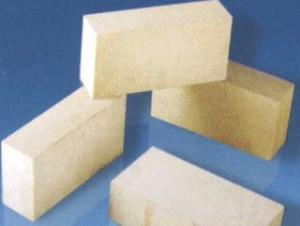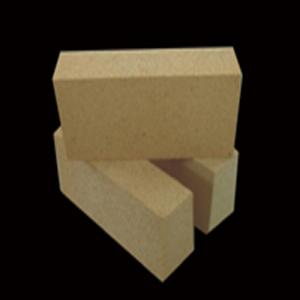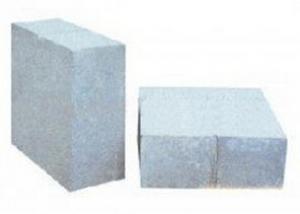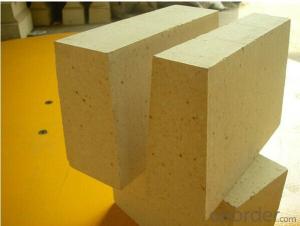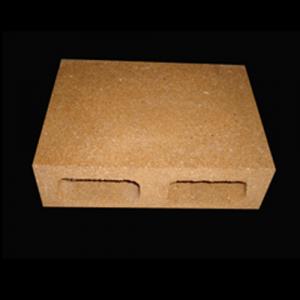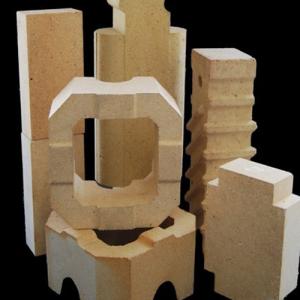High Alumina Fused Cast Brick Zirconia Alumina Brick for Glass Furnace
- Loading Port:
- Tianjin
- Payment Terms:
- TT OR LC
- Min Order Qty:
- 1 m.t.
- Supply Capability:
- 2000 m.t./month
OKorder Service Pledge
OKorder Financial Service
You Might Also Like
Description of Fused Cast Brick
Fused Cast Brick Zirconia Alumina Brick for Glass Furnace is made from fused AZS sintered again. Fused Cast Brick for Glass Furnace has good resistance against glass corrosion,low pollution and good high temperature performance. Fused Cast Brick for Glass Furnace is widely used in bottom paving, pool wall, gap part and small kiln etc.
Specifications for Fused Cast Brick
Item |
unit | Properties | ||||||||||
AZS—33 | AZS—36 | AZS—41 | ||||||||||
Y | H | Y | H | Y | H | |||||||
Al2O3 | % | Residual quantity | ||||||||||
ZrO2 | ≥ | 32 | 35 | 40 | ||||||||
SiO2 | ≤ | 16 | 17 | 13.5 | 14.5 | 13 | 14 | |||||
Na2O | 1.5 | 1.4 | 1.3 | |||||||||
Fe2O3+TiO2+CaO+MgO +Na2O+K2O+B2O3 | 2.5 | 3.0 | 2.5 | 3.0 | 2.5 | 3.0 | ||||||
Glass phase exudate temperature | ≥ | °C | 1400 | 1080 | 1400 | 1100 | 1400 | 1150 | ||||
% Thermal expansion rate | 1000°C | 0.8 | ||||||||||
1500°C | 0.8 | |||||||||||
Cold Crushing strength Mpa | 350 | |||||||||||
Bulk density,g/cm3 | PT,QX | ≥ | KG/dm3 | 3.40 | 3.30 | 3.45 | 3.4 | 3.55 | 3.50 | |||
MS | 3.50 | 3.45 | 3.60 | 3.55 | 3.70 | 3.65 | ||||||
WS | 3.60 | 3.55 | 3.70 | 3.65 | 3.80 | 3.75 | ||||||
True density,g/cm3 | 3.8-3.9 | |||||||||||
Crystal phase composition | Item | Inclined zircon | Alpha corundum | Glass phase | ||||||||
AZS—33 | 32 | 47 | 21 | |||||||||
AZS—41 | 40 | 43 | 17 | |||||||||
Application | PT,QX | ZWS | WS | |||||||||
sodium silicate furnace,ceramic frit furnace , glass furnace,and other furnaces | ||||||||||||
Features of Fused Cast Brick
Casted by melting raw material in the mold, then cooling and solidification.
Strong glass corrosion resistance and high thermal shack stability.
Good wear-resistance,dregs-resistance and alkali corrosion resistance.
High-purity raw material, barely no pollution.
Top quality, long service time.
Typical Application of Fused Cast Brick
Sodium silicate furnace, ceramic frit furnace, glass furnace, etc.
Important parts of furnaces where chemical erosion is serious and temperature changes frequently.
Lining of glass furnace.
The chemical industrial, metallurgical furnaces.
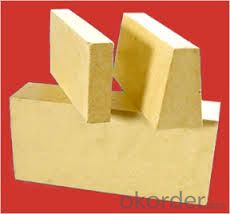
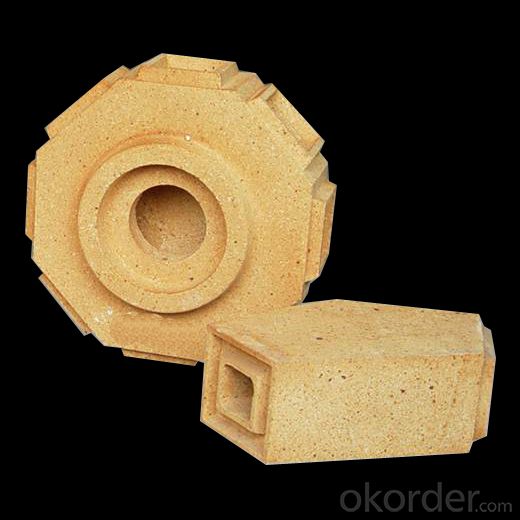
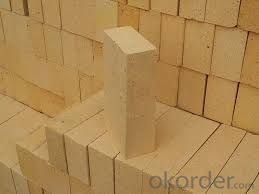
- Q: How much is the bending temperature aluminum silicon carbide brick for torpedo car
- The product has the advantages of high temperature, little creep, strong corrosion resistance and good thermal shock resistance, and is suitable for large and medium-sized hot blast stoves.
- Q: Introduction of high alumina brick
- Made from alumina or other raw materials of high alumina content; formed and calcined. High thermal stability, fire resistance above 1770. Slag resistance is good, used for masonry steel smelting furnace, glass furnace, cement rotary furnace lining.
- Q: What is the standard size of high alumina brick?
- Standard brick: 230 x 115 x 65; four points: 230 x 115 x 40; three points: 230 x 115 x 30; 150 x 120: Brick gable. Light weight brick 1 to 1.7 kilograms; heavy clay superscript brick weighs 3.75 kilograms; light 30 plates 0.79 kilograms; light 40 plates, 1.05 kilograms.
- Q: What are the common thermal insulation materials for thermal conductivity?
- The single organic insulation material should be the best polyurethane in the field. In accordance with the production process can be divided into on-site foam polyurethane and factory prefabricated rigid foam polyurethane board. The scene is polyurethane foam isocyanate and polyol to cool (polyether or polyester) two components as the main raw materials with additives, the on-site spraying construction with thermal insulation and waterproof function of the rigid foam material.
- Q: What materials are used for roof insulation?
- There are two kinds: one is a kind of cotton insulation board, such as rock wool board, aluminum silicate cotton board, but this is not environmental protection, harmful to life, foam board (this fire safety factor minimum), these relatively cheap.
- Q: What are the specifications for bricks?
- Thecompressive node as a new type of building energy-saving wall materials, which can be used for masonry walls, but also has good thermal properties, in line with the construction of the building module, reduce the loss in the process of construction, improve work efficiency; the hole rate reached more than 35%, can reduce the weight of the wall, save the foundation engineering cost. Compared with common sintered porous brick, it has the characteristics of heat preservation, heat insulation, light weight, high strength and high construction efficiency. The product is made of shale as raw material. It is produced by high vacuum extrusion molding machine and one yard firing process
- Q: What causes breakage of refractory bricks?
- There are many factors that lead to the damage of refractory brick, can be divided into: the chemical loss (e.g. salt penetration, redox phenomenon), heat loss (burning, thermal shock), mechanical loss (kiln deformation, thrust, brick masonry quality etc.).
- Q: Which thermal shock stability of clay brick and high alumina brick is good?
- Generally, the thermal shock resistance of high alumina brick products is worse than that of clay brick products
- Q: What is the difference between metal compounds and metal solid solutions?
- Sigma phase belongs to Affirmative system, there are 30 atoms in the unit cell, two element alloy, sigma phase formation is related with the following conditions: (1) the atomic size difference, phase difference between the maximum sigma atomic radius of a tungsten cobalt, the atomic radius difference is 12%. (2) there is a set of cubic lattice elements (coordination number 8), and another component is face centered cubic or dense six square lattice (coordination number is 12). (3) appear in "average number of races" (s+d layer electron number) in the range of 5.7 ~ 7.5. The region of the presence of sigma in the two - element alloy is shown in table 3. In the three element system, the concentration and temperature range of the formation of the sigma phase are affected by the addition of third components. Usually in chromium stainless steel in Fe Cr phase, in Fe - Cr - Mn three yuan, sigma phase iron chromium and chromium can form Mn two element, when the addition of manganese in stainless steel, will promote the formation of sigma phase, and stabilizes the wide temperature range. Many of the Fe Cr alloy elements. The phase temperature range increases. In less than 820C stable Fe Cr phase, silicon promotes the formation of D phase and the stable temperature increased to 900 to 960 DEG C, manganese and molybdenum can improve the temperature stability of sigma phase to 1000 DEG C.
- Q: What are the categories of bricks?
- Ordinary brick size of 240 mm * 115 mm * 53 mm, according to compressive strength (Newton / square millimeter, N / mm2) size is divided into MU30, MU25, MU20, MU15, MU10, MU7.5, these intensity levels.
Send your message to us
High Alumina Fused Cast Brick Zirconia Alumina Brick for Glass Furnace
- Loading Port:
- Tianjin
- Payment Terms:
- TT OR LC
- Min Order Qty:
- 1 m.t.
- Supply Capability:
- 2000 m.t./month
OKorder Service Pledge
OKorder Financial Service
Similar products
Hot products
Hot Searches
Related keywords
